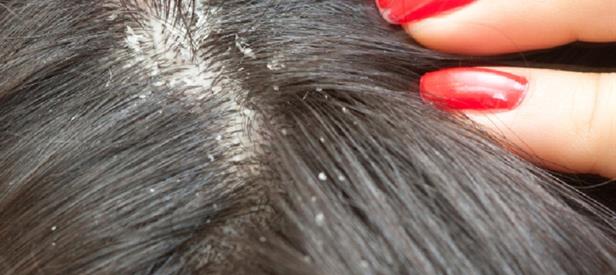Seborrheic Dermatitis: Symptoms, Causes, Treatment
What are the symptoms of seborrheic dermatitis?
Seborrheic dermatitis is a common skin condition that causes redness, scaly patches, and dandruff. The symptoms can vary depending on the affected area of the body, but common symptoms of seborrheic dermatitis may include:
- Redness: Areas of the skin affected by seborrheic dermatitis may appear red or inflamed.
- Scaly patches: The skin may develop greasy or crusty yellow or white scales or plaques.
- Itching: Seborrheic dermatitis can cause itching, which may be mild to severe.
- Dandruff: On the scalp, seborrheic dermatitis can cause flaky, white or yellowish scales to form on the scalp and in the hair, often known as dandruff.
- Greasy or oily appearance: The affected skin may appear greasy or oily.
- Hair loss: In severe cases, seborrheic dermatitis on the scalp may lead to temporary hair loss.
- Burning sensation: Some people with seborrheic dermatitis may experience a burning sensation on the affected skin.
- Sensitive skin: The affected skin may be more sensitive than usual, especially to skincare products or cosmetics.
Seborrheic dermatitis most commonly occurs on the scalp, face (especially around the eyebrows, nose, and ears), and upper chest, but it can also affect other areas of the body. The symptoms of seborrheic dermatitis can be similar to other skin conditions, so it’s important to see a healthcare provider for a proper diagnosis and treatment plan if you suspect you have seborrheic dermatitis.
What are the causes of seborrheic dermatitis?
The exact cause of seborrheic dermatitis is not known, but several factors are believed to contribute to its development. These factors include:
- Malassezia: This is a type of yeast that is normally found on the skin. It is believed that an overgrowth of Malassezia can contribute to the development of seborrheic dermatitis.
- Sebum production: Seborrheic dermatitis is more common in areas of the skin where there are a lot of oil glands, such as the scalp, face, and upper chest. An increase in sebum production may play a role in the development of the condition.
- Genetics: There may be a genetic component to seborrheic dermatitis, as it tends to run in families.
- Hormones: Changes in hormone levels, such as those that occur during puberty, pregnancy, or with certain medical conditions, may contribute to the development of seborrheic dermatitis.
- Stress: Stress can exacerbate seborrheic dermatitis or trigger flare-ups in some people.
- Certain medical conditions: Seborrheic dermatitis is more common in people with certain medical conditions, such as Parkinson’s disease, HIV/AIDS, and some autoimmune disorders.
- Certain medications: Some medications, such as lithium, interferon, and psoralen, may increase the risk of developing seborrheic dermatitis.
- Weather: Cold, dry weather can worsen seborrheic dermatitis, while warm, humid weather may improve symptoms.
It’s important to note that seborrheic dermatitis is not caused by poor hygiene and is not contagious. The exact cause of seborrheic dermatitis may vary from person to person, and it is likely due to a combination of factors.
What is the treatment for seborrheic dermatitis?
The treatment for seborrheic dermatitis aims to reduce inflammation, control the yeast that contributes to the condition, and manage symptoms such as itching and flaking. Treatment options may include:
- Topical antifungal medications: These medications, such as ketoconazole, ciclopirox, or selenium sulfide, can help reduce the growth of yeast on the skin and reduce inflammation.
- Topical corticosteroids: These medications can help reduce inflammation and itching, but they should be used sparingly and under the guidance of a healthcare provider, as long-term use can have side effects.
- Topical calcineurin inhibitors: These medications, such as tacrolimus or pimecrolimus, can help reduce inflammation and are sometimes used as an alternative to corticosteroids.
- Medicated shampoos: Shampoos containing ketoconazole, selenium sulfide, or zinc pyrithione can help reduce scaling and itching on the scalp.
- Antifungal creams: For seborrheic dermatitis on the face or other areas of the body, antifungal creams may be prescribed.
- Coal tar preparations: Coal tar can help reduce itching, inflammation, and scaling, but it can also increase sensitivity to sunlight.
- Salicylic acid: Shampoos or creams containing salicylic acid can help soften and remove scales on the scalp or other affected areas.
- Lifestyle and home remedies: Regularly washing the affected areas with a gentle cleanser, using a humidifier to add moisture to the air, and avoiding harsh skincare products or hair products can help manage symptoms.
- Managing stress: Stress can exacerbate seborrheic dermatitis, so finding ways to manage stress, such as through relaxation techniques or therapy, may help reduce flare-ups.
It’s important to follow the treatment plan recommended by a healthcare provider, as seborrheic dermatitis can be a chronic condition that requires ongoing management. In some cases, seborrheic dermatitis may be linked to other medical conditions, so a healthcare provider may recommend further evaluation or treatment if needed.




